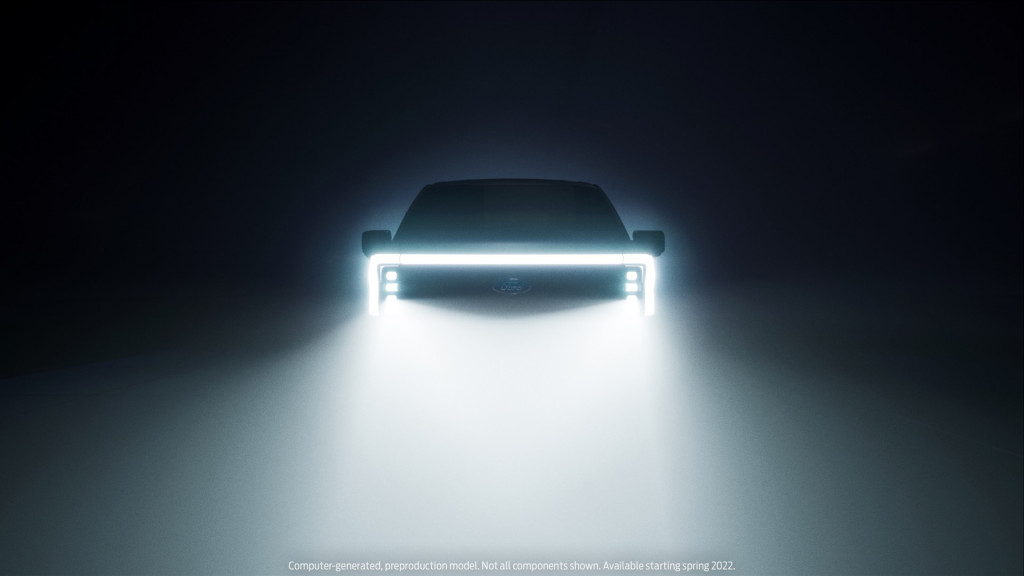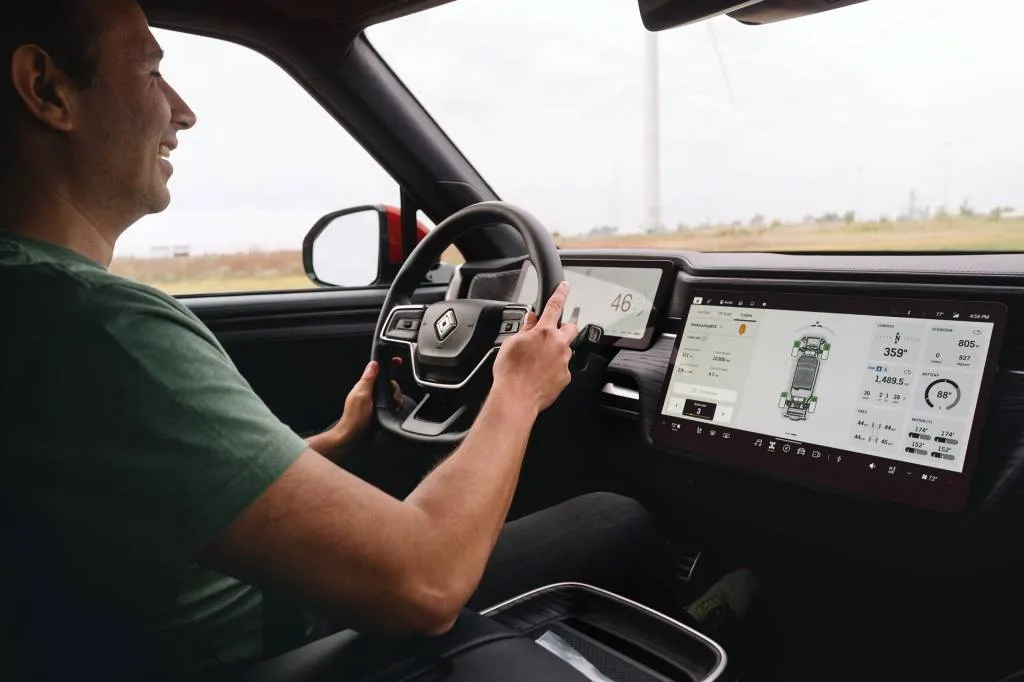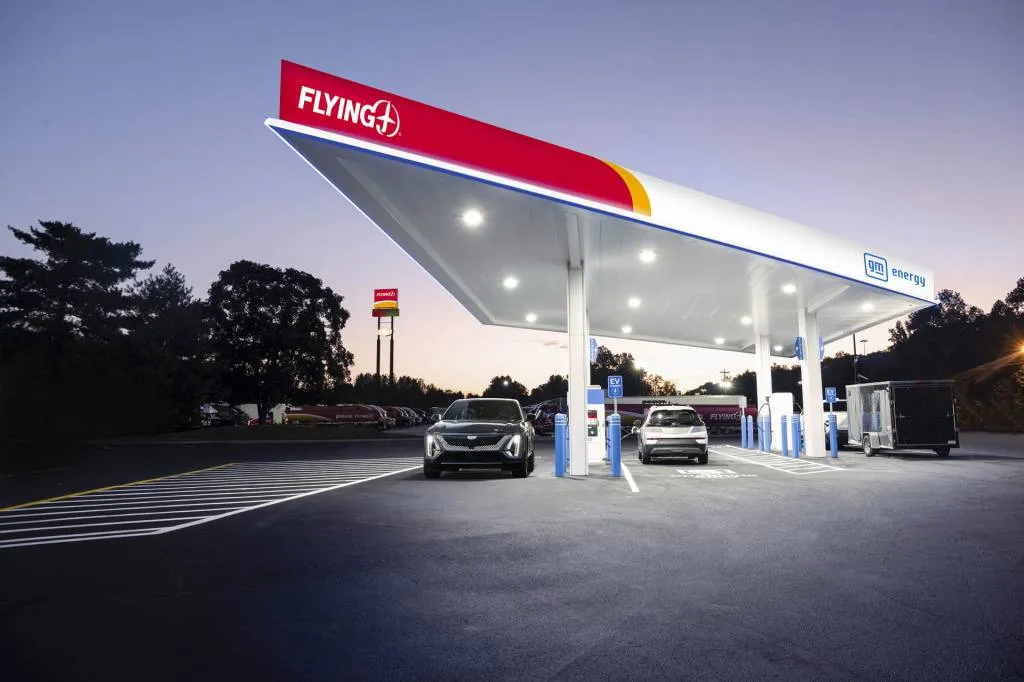Electric vehicles remain the future of transportation at the end of 2023, as they were at the start of the year. But it was a year of tough questions to accompany vast market change, not just as the massive scales of supply and demand swung the other way, but as an industry refocused.
While 2023 marked the end of supply-chain issues that had dragged on through 2022, it also brought the biggest automotive labor strike in a generation—with EVs at the core.
From charging infrastructure reliability to EV import tariffs and setting standards for battery materials and green hydrogen, the Biden administration has become at the center of the EV economy. It’s a strategic position that has sent much of intended federal EV spending toward “red” states, as EVs become even more of a national political issue in this next Presidential election year.
As you mull that, and wait another couple days to see our Best Car To Buy winner for 2024, read on for Green Car Reports biggest EV stories of 2023—the five topics that produced a complex tangle of twists and turns that will, in each of these situations continue well into 2024.
GM EVs get Tesla Supercharger access in 2024
Everyone’s switching to Tesla NACS.
By the end of the year nearly every automaker would have announced a switch to the Tesla charge port for their future EVs?
That would have been very hard to imagine at the start of 2023. But somehow by later in the year every other major automaker except Stellantis has formalized it.
After Tesla’s November 2022 appeal that other automakers use its connector, renamed NACS, there were industry rumors in the first quarter of the year suggesting several niche automakers were considering the shift to NACS. Initially they might have been hard to take seriously as NACS wasn’t yet a real charging standard. The true turning point—or leap of faith—came in May with a joint announcement from Ford CEO Jim Farley and Tesla CEO Elon Musk, committing to the Tesla port in future Ford EVs and an adapter allowing Supercharger access in 2024. Soon after that, the cards fell quickly, with GM, Rivian, Volvo, and Polestar all following by the end of June, with nearly all the rest in subsequent months.
All said, NACS changed the narrative, even though the connector itself was mostly a red herring for what’s failing in public charging. What had been a grudging admission from automakers in 2022 that public charging was something Tesla was doing better became, amid an increasing din of dissatisfaction with public charging, a chance for a fresh start.

Ford F-150 Lightning augmented-reality experience
EV pricing returned to Earth.
After price gouging galore in 2022—some of it at the dealership—2023 became the year of the official EV price adjustment. Tesla was the most proactive about it, with across-the-board price cuts of up to 20% announced in January 2023. Prices on used Teslas also plunged as more EVs hit the market. Among several other adjustments, Tesla again cut prices on the Model Y and Model 3 in October, but by the end of the year these pricing changes seemed to restabilize.
Tesla wasn’t the only one, though. Models offering significant MSRP cuts included the Hyundai Ioniq 6, Lucid Air, Ford Mustang Mach-E, and Ford F-150 Lightning—with the latter still not undoing all of its nearly 50% markup at the base level versus originally announced pricing.
As we close out 2023, the takeaway of this unprecedented run-up isn’t yet clear. Is the volatility of it still scaring away would-be buyers?

Rivian Gauge View
Software (almost) killed the electric car.
While the headline above might overstate the situation, it seemed at times that if 2022 was the year of supply-chain-induced drama, 2023 was the year that overambitious software rollouts might have potentially held EV adoption back.
We’d already seen the potential of over-the-air updates in adding driving range, improving ride and handling and, in various cases, freeing Tesla from some in-person recall fixes. They are the future.
But it wasn’t all rosy. In November, Rivian bricked the infotainment system in its R1S and R1T electric trucks, but fortunately Rivian was able to abort the update for most owners, and most of those affected got a quick over-the-air remedy.
As the year closes, GM has paused Blazer EV deliveries over software woes, and it seems like nearly every over-the-air-capable model entering the market has at least one feature that hasn’t yet been software-enabled.
No doubt consumer organizations are grappling with a question: Is buying an incomplete product the future?

2024 Chevrolet Blazer EV RS
The EV tax credit remains a mess.
From the EV leasing loophole to supply-chain requirements and the shift of the tax credit to a dealer-based rebate system in 2024—all in addition to new household-income and price-cap requirements—there’s been a lot of confusion about the EV tax credit.
At several points, delays in precise language from the Department of Treasury and in front-facing consumer information from the EPA have given EV shoppers little way of knowing whether the vehicle they’re considering is eligible for a credit or not. Dealers aren’t ready either.
Full guidance from the Treasury governing 2024 wasn’t released until December 1. That’s led to less-than-ideal situations for buyers in which they have to rely on language like Tesla’s, suggesting that the Model Y “likely” won’t qualify in 2024, and to situations in which GM, for instance, is scrambling to change sourcing plans.
And in December, when the EPA listed the $99,990 Tesla Cyberbeast as qualifying for $7,500 in 2023 (it’s neither available in 2023 nor $80,000 or less, among several concerns), even it appeared confused about what qualified and why.

GM and Pilot Company’s EV charging network
More automakers—and retailers—get directly involved in charging.
In 2021 and 2022, automakers and retailers started scaling up their commitments toward charging infrastructure. Perhaps spurred by the success of Tesla Supercharging, a Mercedes fast-charging network is starting with America, and more notably, a network funded by seven global automakers—tentatively, We Charge—is aiming to be the first true rival in size and scope to the Tesla Supercharger network. Other highlights included first stations in a Pilot-GM network, the launch of a 7Charge network at 7-Eleven stores, the opening of a Volvo-Starbucks network, and a new network including thousands of Walmart and Sam’s Club chargers and run by Walmart itself—in an apparent snub to Electrify America.
With Wall Street interest in charging networks themselves starting to fade, some have recently observed, commitments from automakers, retailers, and companies that see charging as a traffic-driver and image-booster may truly be the future—and an optimistic trend that may continue no matter what the outcome of next year’s Presidential election.
